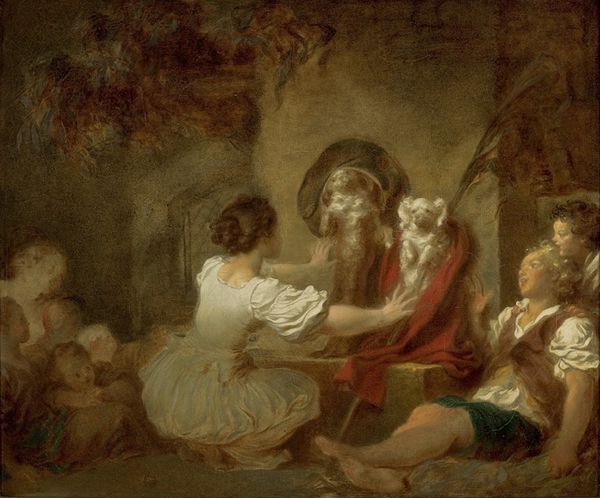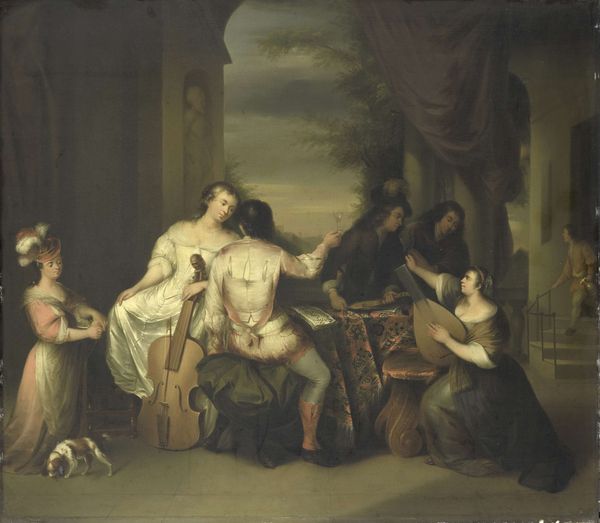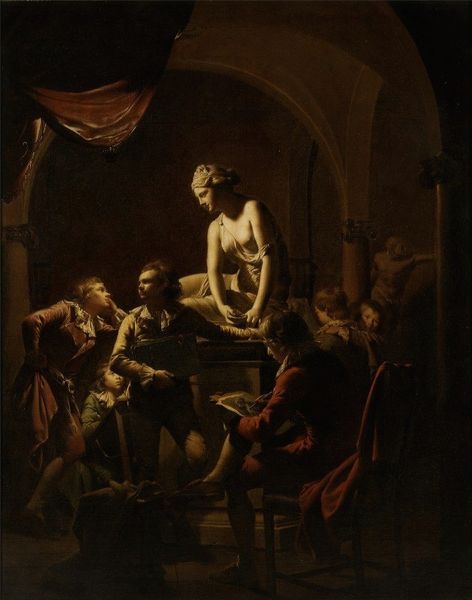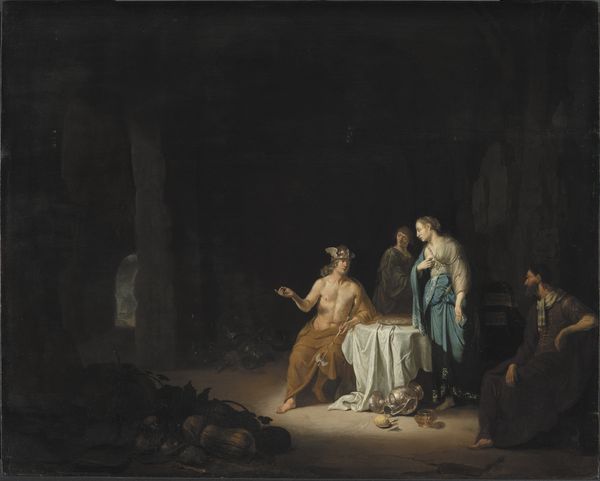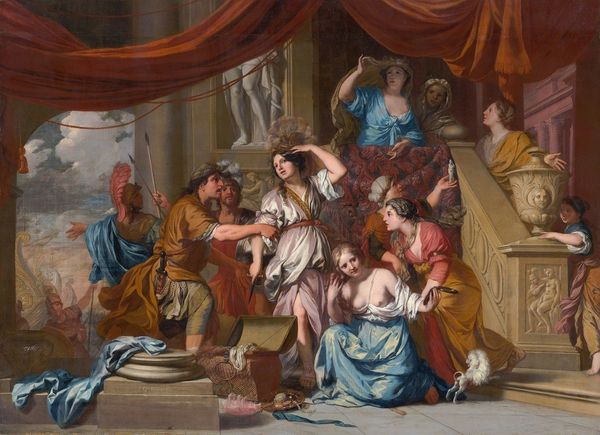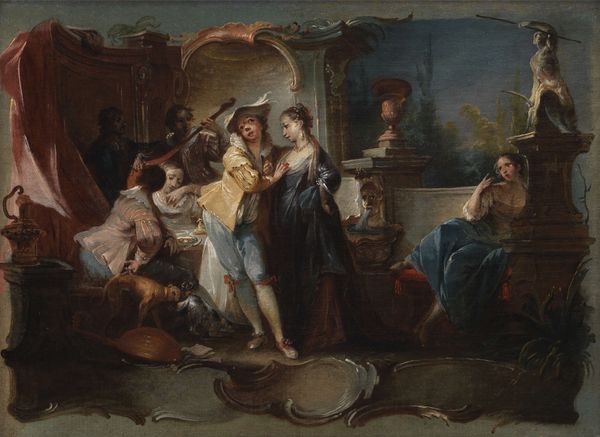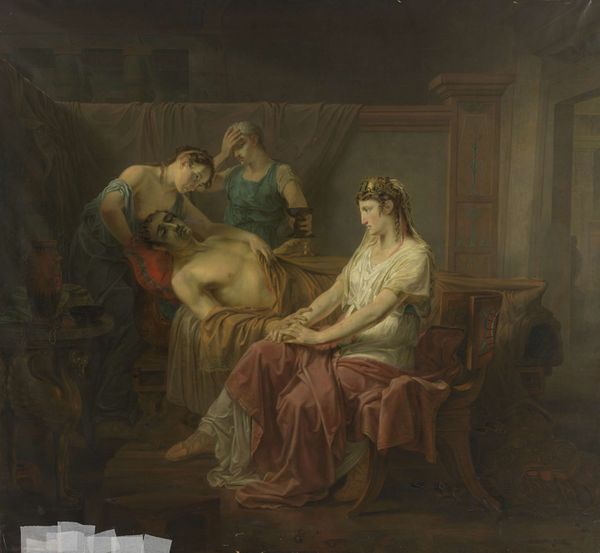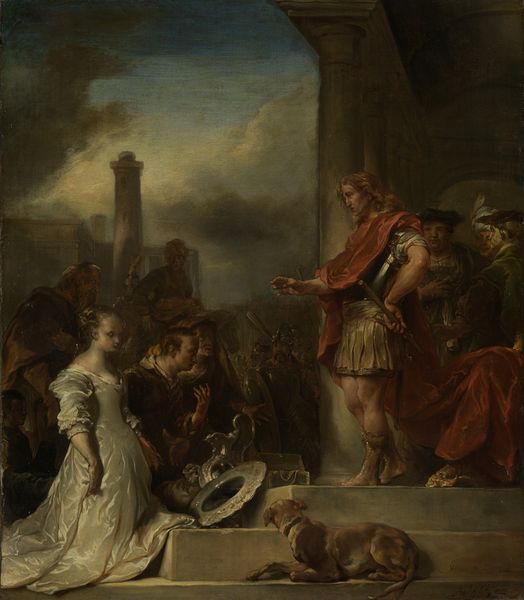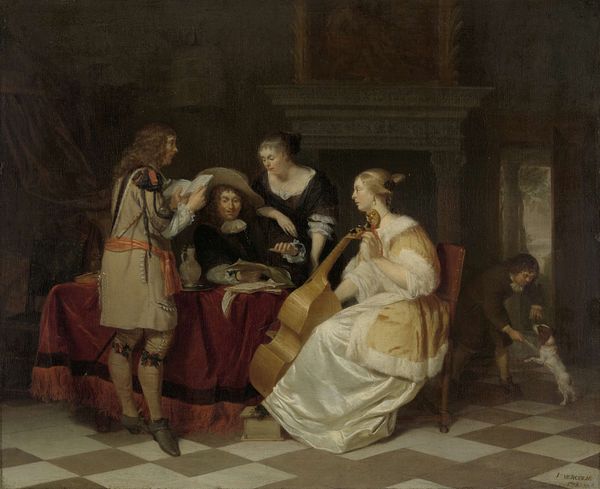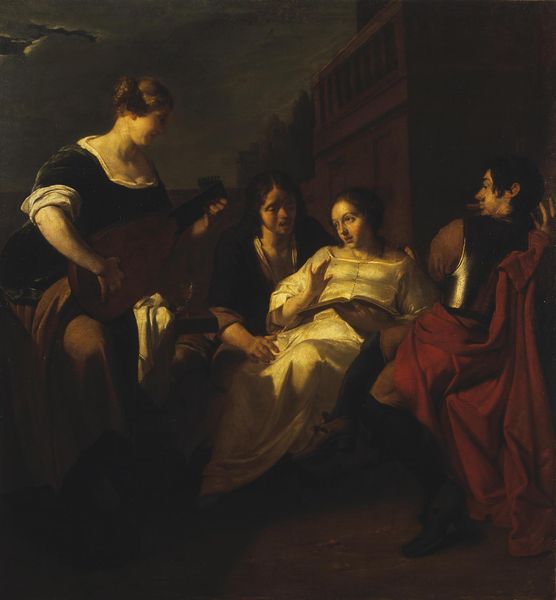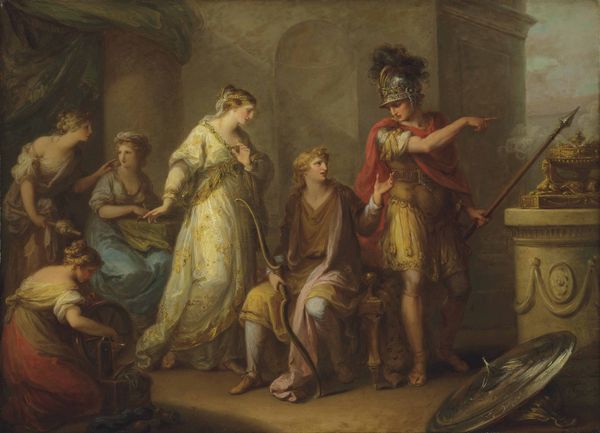
painting, oil-paint
#
allegory
#
baroque
#
dutch-golden-age
#
painting
#
oil-paint
#
figuration
#
history-painting
Dimensions: 59 cm (height) x 74 cm (width) (Netto)
Curator: What a remarkable composition. Before us, we have "Allegory on Peace. Pax Being Crowned by Minerva," an oil painting crafted around 1643 by Willem de Poorter. What are your first impressions? Editor: Well, the somber palette, the dark setting... it's surprisingly un-celebratory for a piece about peace. More like peace after a great tragedy, wouldn't you agree? Curator: Absolutely, there is a melancholic weight to the entire scene. The painting depicts Pax, the Roman goddess of peace, being crowned by Minerva, the goddess of wisdom and warfare. Around them, people offer gifts and tributes. You can sense the figures kneeling before her are really offering supplication, hope for respite from what had to be constant turmoil. Editor: Indeed. This work emerges from the Dutch Golden Age, which, despite its name, was a period marked by intense social stratification, colonial expansion, and its inherent violences. Note the contrast – we see symbols of bounty, such as that figure carrying what seems to be a full harvest of grain –positioned beside the clear military undertones coming from Minerva. Are we celebrating a conditional peace, bought and maintained by force? Curator: I see your point. It’s complex, the interplay between triumph and subdued relief. The single figure illuminated by a lonely sky at the far left… the lion also present… there's such an odd grouping. I suppose to my mind it suggests peace is fragile, guarded, and hard-won. That landscape is always lurking. Editor: And this aligns perfectly with a wider context. The era, roughly coinciding with the Thirty Years' War, reveals a strong yearning for stability amidst perpetual conflict. Willem de Poorter skillfully hints that this longing isn’t simply for the absence of war, but for systemic justice, economic prosperity for all, and lasting freedom, an intersection of all social demands. Curator: He definitely encapsulates the era's complex feelings so well. Editor: It certainly provokes contemplation on how society achieves, maintains, and understands what peace really means. Food for thought, right?
Comments
No comments
Be the first to comment and join the conversation on the ultimate creative platform.
